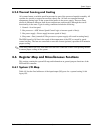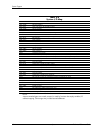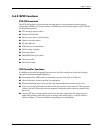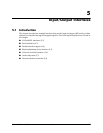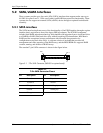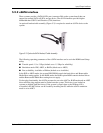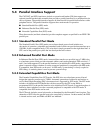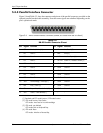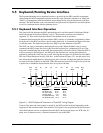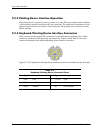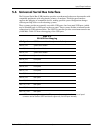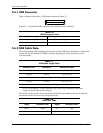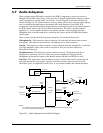
5-4 www.hp.com Technical Reference Guide
Input/Output Interfaces
5.3 Serial Interface
The CMT, MT, and SFF form factors include one RS-232-C type serial interface to transmit and
receive asynchronous serial data with external devices. These systems allow the installation of a
second serial interface through an optional bracket/cable assembly that attaches to header P52 on
the system board. The serial interface function is provided by the super I/O controller component
that includes two NS16C550-compatible UARTs.
The UART supports the standard baud rates up through 115200, and also special high speed rates
of 239400 and 460800 baud. The baud rate of the UART is typically set to match the capability
of the connected device. While most baud rates may be set at runtime, baud rates 230400 and
460800 must be set during the configuration phase.
The serial interface uses a DB-9 connector as shown in the following figure with the pinout listed
in Table 5-2.
Figure 5-3. DB-9 Serial Interface Connector (male, as viewed from rear of chassis)
The standard RS-232-C limitation of 50 feet (or less) of cable between the DTE (computer) and
DCE (modem) should be followed to minimize transmission errors. Higher baud rates may
require shorter cables.
Table 5-2.
DB-9 Serial Connector Pinout
Pin Signal Description Pin Signal Description
1 CD Carrier Detect 6 DSR Data Set Ready
2 RX Data Receive Data 7 RTS Request To Send
3 TX Data Transmit Data 8 CTS Clear To Send
4 DTR Data Terminal Ready 9 RI Ring Indicator
5 GND Ground -- -- --




